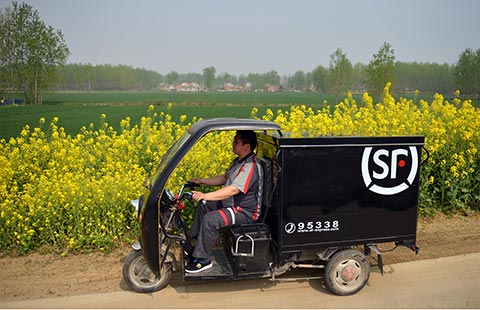Foreign truck brands ready to rumble
By Wang Chao (China Daily) Updated: 2012-10-19 17:30As the economy in Europe and the US shows no signs of a quick recovery, the Chinese market becomes even more appealing to international truck brands. In terms of volume, the Chinese market is the size of the European, US and Japanese markets combined, says China Association of Automobile Manufacturers.
This year, however, could end up being a turning point for foreign truck brands in China.
Last month, sources close to the company say, after six years' negotiation, the joint venture between Dongfeng Motor Corp and Volvo was approved by the government.
Volvo hasn't made an official announcement, but it has already done a partnership deal with Dongfeng Nissan Diesel Motor Co, who said Volvo was working to expand the partnership with Dongfeng.
Chinese regulations prevent foreign companies from holding more than 50 percent share in a joint venture.
There are foreign forerunners in running big trucks into China. Steyr, a heavy-duty truck brand belonging to German manufacturer MAN, gained success and a weighty reputation in China.
In 1983, China National Heavy Duty Truck Group introduced the Steyr 91-series, as the standard blueprint for Chinese heavy-duty trucks to come. Until 2006, when the cooperation with Steyr ended, China produced 150,000 Steyr trucks - about 120,000 are still being used.
MAN is still benefiting from its cooperation in that earlier project. In 2011, it sold 155,520 trucks globally, with revenue of 12.6 billion euros, a year-on-year increase of 19 percent. The company attributes a big part of this achievement to the performance of the Chinese and Latin American markets.
MAN is now involved in several partnerships with Chinese companies relating to driving cabs and chassis.
But as Chinese truck brands get stronger, forming a partnership has become harder.
After a decade of stagnant sales, Western brands realize that simply exporting their products to this market in general is no longer viable. Consequently, they have lowered their sights to target the medium-end section of the market.
They are moving on the right track, says Xie Guangyao, editor-in-chief of CVWorld, a major commercial vehicle website in China. He says the Chinese truck market is a pyramid. On top are the European brands, then the Japanese, and at the bottom are the Chinese trucks, leaving the medium-level market relatively empty.
"At the top are very professional and very demanding customers asking for good products," Xie says. "But this market is not big enough for these foreign brands. To move on they need to offer affordable products to Chinese customers."
This will certainly benefit Chinese firms, as it will help to upgrade low-end products and bring higher profit margins.
- Alibaba's YunOS becomes world's third-largest smartphone OS
- Chinese agribusinesses to hold 'match-making' event in New Zealand
- UAE's major port operator seeks benefits from China's Belt and Road Initiative
- Nigeria, China currency swap forces US dollar rate down
- CSSC profit jumps in 2015
- China's growing investment in US not 'Trojan Horse'
- Belt and Road Initiative to benefit Asia with Chinese investment
- Designers recycle metal waste into artwork

















